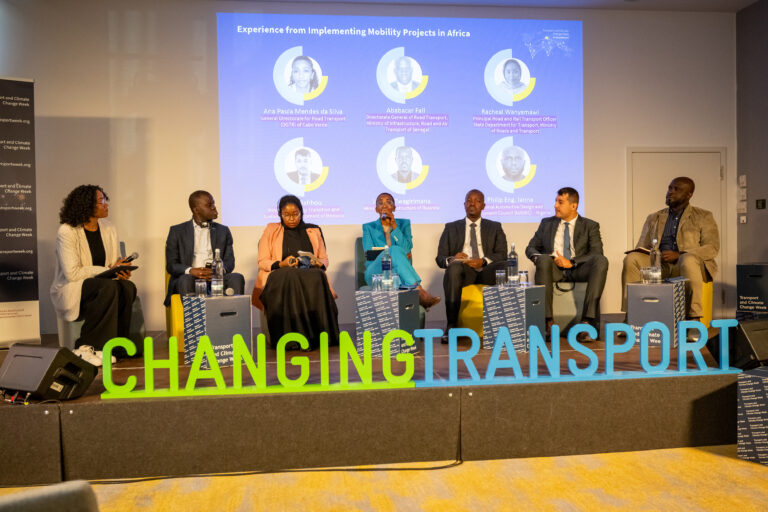Parking and Transportation Services announce updates on parking, shuttles, permit renewals – The Daily Cougar

Report on University of Houston Parking and Transportation Services Updates and Alignment with Sustainable Development Goals
Introduction
This report summarizes the key policy updates, facility changes, and upcoming projects presented at the Parking and Transportation Services (PTS) Fall Town Hall meeting. The initiatives reflect a commitment to enhancing campus infrastructure, safety, and sustainability, aligning with several United Nations Sustainable Development Goals (SDGs), particularly SDG 9 (Industry, Innovation, and Infrastructure), SDG 11 (Sustainable Cities and Communities), and SDG 16 (Peace, Justice, and Strong Institutions).
Technological and Infrastructural Enhancements (SDG 9)
In an effort to modernize campus systems and build resilient infrastructure, PTS has implemented significant technological upgrades. These advancements support SDG 9 by fostering innovation and improving operational efficiency.
- Automated Vehicle Identification: Toll tag readers at all garages and gated lots have been replaced with advanced license plate reader technology.
- Software Modernization: The enterprise software managing all PTS programs and services has been renewed.
- Digital Payment Systems: A Pay-by-Phone system has been introduced, replacing the previous text-to-pay service.
- Citation and Appeals Process: A digital-first approach has been established for citation appeals, which must be submitted via a QR code or the myParking account on AccessUH.
Strategic Campus Development and Sustainable Land Use (SDG 11)
Campus land use is being strategically managed to support the development of a safe, inclusive, and sustainable community, directly contributing to SDG 11. This includes reallocating land for essential community infrastructure such as housing and amenities.
- Garage Consolidation: The Welcome Center Garage and Welcome Center Student Garage have been merged into a single permit area, now designated as the Welcome Center South and North Garages.
- Lot Conversions and Closures for Development:
- Gated Lot 1A has been converted into a Pay-by-Phone lot.
- Lot 13A has been closed to facilitate the construction of new university housing, scheduled for 2027.
- Lot 6B will be permanently closed at the end of the fall semester for a new dining facility.
- Lot 19C is scheduled to go offline in January 2026 for the construction of the Hobby School of Public Affairs building.
Enhancing Campus Safety and Security (SDG 11 & SDG 16)
The Campus Lighting and Security Enhancement Project is a critical initiative aimed at creating a safer environment for all members of the university community. These efforts are in direct support of SDG 11.2 (providing safe and sustainable transport systems) and SDG 16 (promoting peaceful and inclusive societies).
- Lighting Upgrades: Lot 6A has reopened following security upgrades, and new lighting installations are underway in Zone D, with a completion target of December 31, 2025.
- Access Control: Security gates are being installed at all entrances and exits in Zone B to enhance access control and safety.
Promoting Sustainable and Accessible Transportation (SDG 11)
PTS provides multiple transportation options designed to reduce single-occupancy vehicle use and ensure accessible mobility, aligning with the objectives of SDG 11 to provide access to sustainable transport systems for all.
- Shuttle Services:
- The Cougar Line campus shuttle operates from 7 a.m. to 7 p.m., Monday through Friday.
- A dedicated shuttle connects the main campus with the Sugar Land campus for students with classes in both locations.
- After-Hours Transportation: Cougar Ride provides safe, on-demand transportation during evening hours, available via the UH Go app.
- Active Mobility: Free vehicle registration is now available for bicyclists and scooter riders through their myParking accounts, encouraging alternative modes of transport.
Improving Institutional Effectiveness and Communication (SDG 16)
To build more effective, accountable, and transparent institutions as outlined in SDG 16, PTS is refining its administrative processes and enhancing communication with the campus community.
- Permit Management: The permit waitlist system will be eliminated after the fall semester, replaced by a system showing real-time availability.
- Renewal Process: Faculty and staff permits will auto-renew annually, while students will have a designated window (November 5-12) to renew fall permits for the spring semester.
- Proactive Communication: A new text alert system has been launched to directly inform permit holders of maintenance, closures, or other issues affecting their designated parking areas.
Analysis of Sustainable Development Goals in the Article
1. Which SDGs are addressed or connected to the issues highlighted in the article?
The article highlights issues and initiatives that are directly connected to two Sustainable Development Goals (SDGs):
- SDG 9: Industry, Innovation, and Infrastructure: This goal is addressed through the article’s focus on upgrading and building new infrastructure and integrating innovative technologies to improve services on the university campus.
- SDG 11: Sustainable Cities and Communities: This goal is relevant as the article discusses the development of a safer, more accessible, and sustainable campus community through enhancements in transportation systems and public space safety.
2. What specific targets under those SDGs can be identified based on the article’s content?
Based on the article, the following specific targets can be identified:
- Under SDG 9: Industry, Innovation, and Infrastructure
- Target 9.1: Develop quality, reliable, sustainable and resilient infrastructure… to support economic development and human well-being. The article details numerous infrastructure projects, such as replacing toll tag readers with license plate readers, renewing enterprise software, and constructing new facilities like housing, a dining hall, and the Hobby School of Public Affairs building. These developments aim to improve the reliability and quality of campus infrastructure for the well-being of students, faculty, and staff.
- Target 9.c: Significantly increase access to information and communications technology. The implementation of a new text alert system for permit holders and the switch to a Pay-by-Phone system are direct examples of increasing access to and use of modern information and communications technology to improve service delivery and communication.
- Under SDG 11: Sustainable Cities and Communities
- Target 11.2: Provide access to safe, affordable, accessible and sustainable transport systems for all. The article describes the campus transportation system, including the “Cougar Line campus shuttle” and the “Sugar Land shuttle,” which provide accessible transport. The “Cougar Ride” service offers a safe transportation option during evening hours. Additionally, the option to register bicycles and scooters for free encourages sustainable transport alternatives.
- Target 11.7: Provide universal access to safe, inclusive and accessible, green and public spaces. The “Campus Lighting and Security Enhancement Project” is a direct response to a “spike in campus crime.” The project’s initiatives, such as upgrading lighting in parking lots (Lot 6A, Zone D) and adding gates (Zone B), are aimed at making public spaces on campus safer and more secure for everyone.
3. Are there any indicators mentioned or implied in the article that can be used to measure progress towards the identified targets?
Yes, the article mentions and implies several indicators that can be used to measure progress:
- For SDG 9 Targets:
- Indicator for Target 9.1: The number of new facilities constructed or planned. The article explicitly mentions the closure of Lot 13A for “new UH housing expected in 2027,” Lot 6B for a “new dining facility,” and Lot 19C for the “construction of the Hobby School of Public Affairs building.”
- Indicator for Target 9.c: The adoption of new communication and payment technologies. The article points to the launch of a system to “text permit holders” and the replacement of text-to-pay with a “Pay-by-Phone” system, which serve as direct measures of technological integration.
- For SDG 11 Targets:
- Indicator for Target 11.2: The availability and operating hours of campus transportation services. The article specifies that the “Cougar Line campus shuttle runs Monday through Friday from 7 a.m. to 7 p.m.” and “Cougar Ride operates from 9 p.m. to 2 a.m.” on specific days, providing measurable data on service availability. The number of registered bicycles and scooters could also serve as an indicator for the adoption of sustainable transport.
- Indicator for Target 11.7: The implementation of safety enhancement projects. Progress can be measured by the completion of specific tasks mentioned in the article, such as the “completion by Dec. 31, 2025” of lighting installations in Zone D and the addition of gates “at all three entrances and exits in Zone B.”
4. Table of SDGs, Targets, and Indicators
| SDGs | Targets | Indicators |
|---|---|---|
| SDG 9: Industry, Innovation, and Infrastructure | 9.1: Develop quality, reliable, sustainable and resilient infrastructure. |
|
| SDG 9: Industry, Innovation, and Infrastructure | 9.c: Significantly increase access to information and communications technology. |
|
| SDG 11: Sustainable Cities and Communities | 11.2: Provide access to safe, affordable, accessible and sustainable transport systems for all. |
|
| SDG 11: Sustainable Cities and Communities | 11.7: Provide universal access to safe, inclusive and accessible, green and public spaces. |
|
Source: thedailycougar.com
What is Your Reaction?
 Like
0
Like
0
 Dislike
0
Dislike
0
 Love
0
Love
0
 Funny
0
Funny
0
 Angry
0
Angry
0
 Sad
0
Sad
0
 Wow
0
Wow
0
















































/environment-climate-change-and-health-(ech)/water-sanitation-hygiene-and-health-(wsh)/landfill-tuvalu-36092.tmb-1200v.jpg?sfvrsn=5c21fe40_1#)

.jpg.webp?itok=0ZsAnae9#)

























